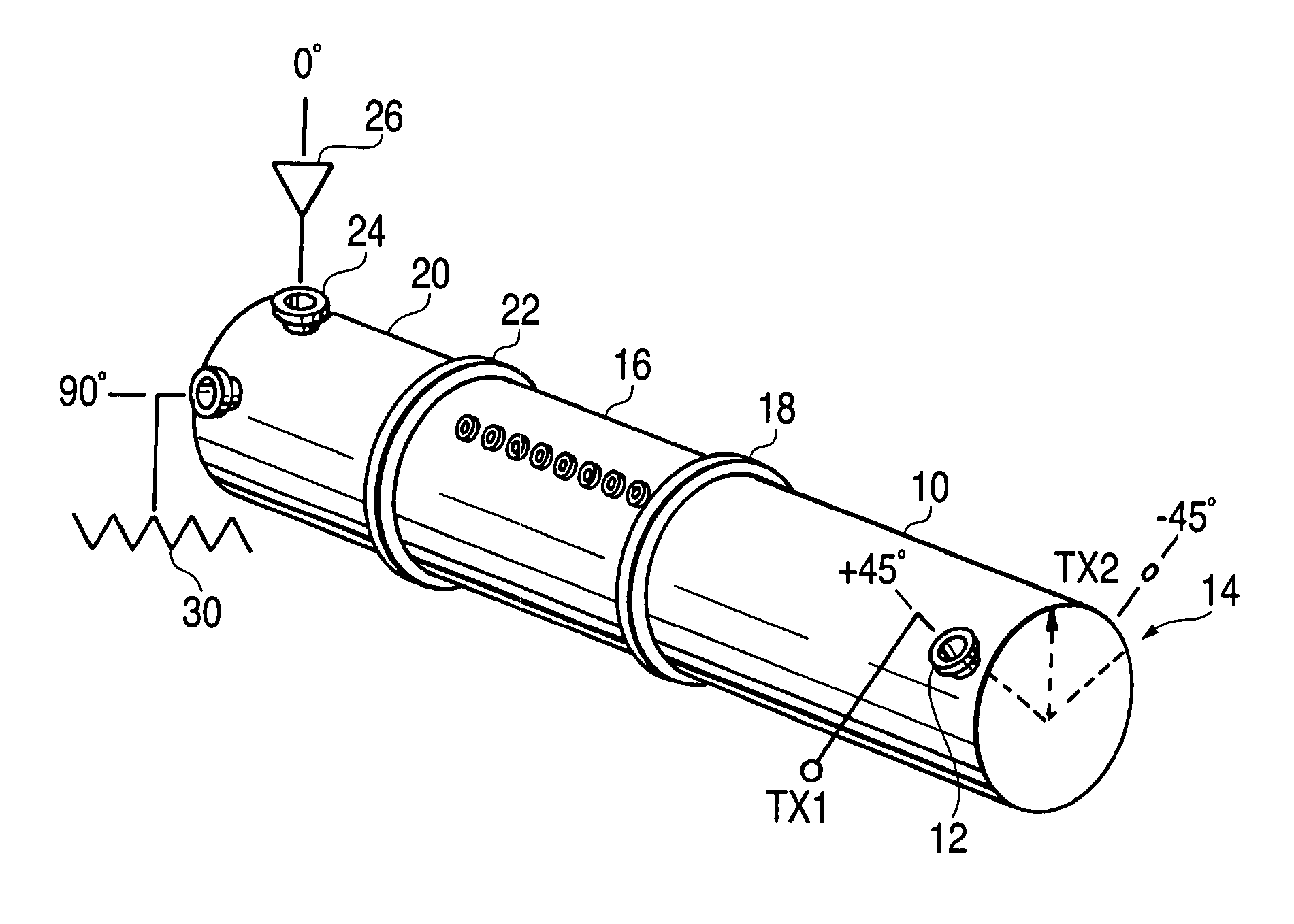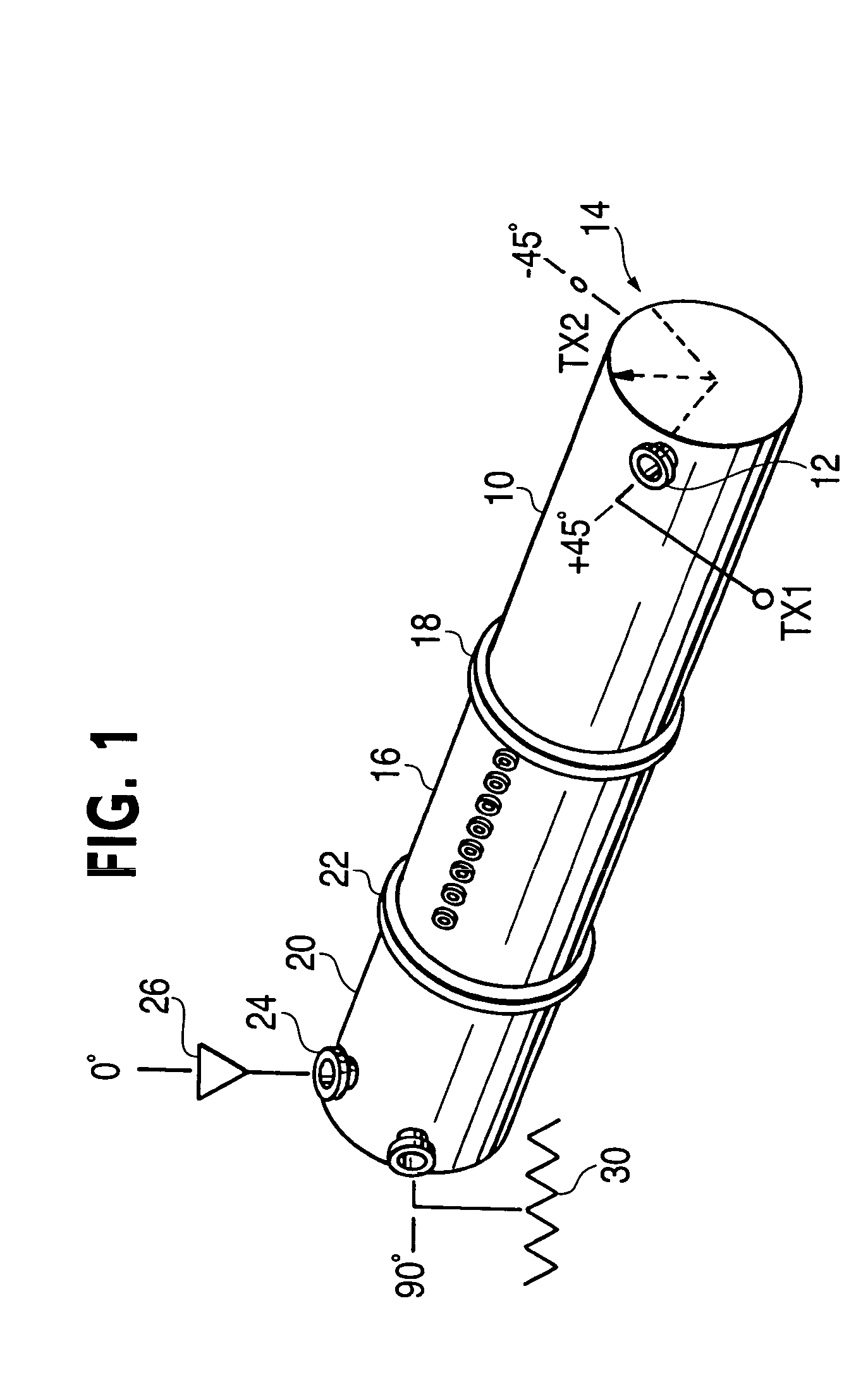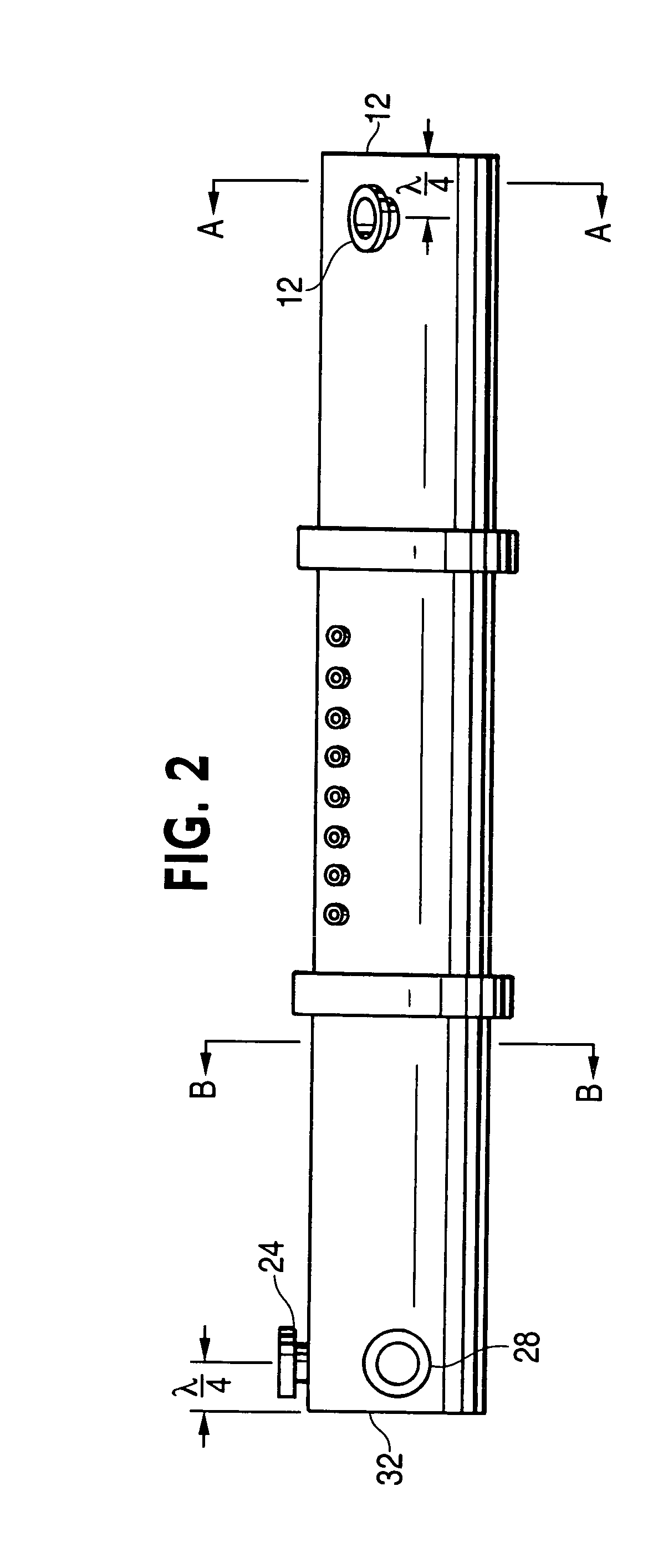Switchless combining system and method
a technology of switching system and combining method, which is applied in the direction of coupling device, waveguide type device, basic electric element, etc., can solve the problems of high amplification ratio, high cost per unit power output, and inefficient tubes,
- Summary
- Abstract
- Description
- Claims
- Application Information
AI Technical Summary
Benefits of technology
Problems solved by technology
Method used
Image
Examples
Embodiment Construction
[0023] A preferred embodiment of a switchless combiner includes a first orthogonal-mode transducer (OMT), based on the concept of circular waveguide (CW), and functioning as an input device to feed signals from two coherent sources into the combiner. The switchless combiner further includes a circular waveguide polarizer functioning to cause the two source signals to combine or not according to its orientation. The third major element of the switchless combiner is a second circular waveguide OMT functioning as an output device to couple one or both signals to an antenna line or to a second output node.
[0024] Preferred embodiments of the invention will now be discussed with reference to the above figures, in which like reference numerals refer to like elements throughout. In accordance with a preferred embodiment of the present invention, the switchless combiner uses coaxial lines to feed all signals in and out of the circular waveguide chamber. FIGS. 1, 2, 4, and 5 illustrate this ...
PUM
 Login to View More
Login to View More Abstract
Description
Claims
Application Information
 Login to View More
Login to View More - R&D
- Intellectual Property
- Life Sciences
- Materials
- Tech Scout
- Unparalleled Data Quality
- Higher Quality Content
- 60% Fewer Hallucinations
Browse by: Latest US Patents, China's latest patents, Technical Efficacy Thesaurus, Application Domain, Technology Topic, Popular Technical Reports.
© 2025 PatSnap. All rights reserved.Legal|Privacy policy|Modern Slavery Act Transparency Statement|Sitemap|About US| Contact US: help@patsnap.com



